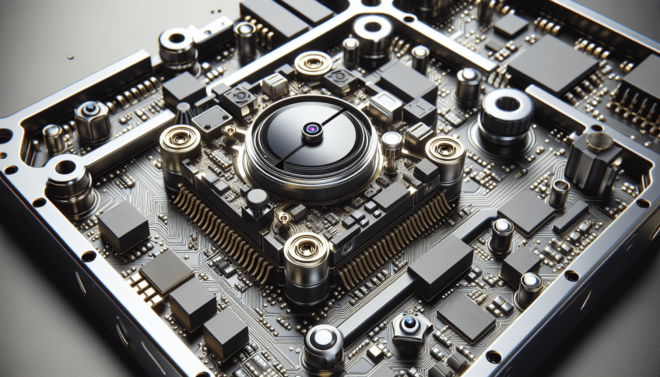How Do I Improve My Drone’s GPS Accuracy?
Understanding GPS Technology in Drones
GPS (Global Positioning System) technology plays a crucial role in the functionality and efficiency of your drone. It provides accurate location data, allowing your drone to navigate through various environments and terrain with precision. Understanding how GPS works in your drone is essential to improving its accuracy.
Factors Affecting GPS Signal Strength
Several factors can affect the strength and accuracy of the GPS signal received by your drone. These factors include environmental conditions, interference from other electronic devices, and the quality of the GPS module in your drone. By addressing these factors, you can enhance your drone’s GPS accuracy.
Environmental Conditions
Environmental conditions such as weather, terrain, and obstacles can impact the GPS signal strength received by your drone. Flying your drone in open areas with minimal obstructions and interference can improve GPS accuracy. Avoid flying near tall buildings, dense forests, or areas with high electromagnetic interference for better signal reception.
Interference from Other Electronic Devices
Interference from other electronic devices can disrupt the GPS signal received by your drone, leading to inaccuracies in its positioning. Keep your drone away from sources of electromagnetic interference, such as Wi-Fi routers, power lines, and other drones operating on the same frequency. Maintaining a clear line of sight between your drone and the GPS satellites can help reduce interference and improve accuracy.
Quality of the GPS Module
The quality of the GPS module installed in your drone can significantly impact its GPS accuracy. Higher-quality GPS modules with dual-frequency support and advanced signal processing capabilities can provide more reliable and accurate location data. Consider upgrading the GPS module in your drone to improve its GPS accuracy, especially if you frequently experience issues with signal reception and positioning.
Tips for Improving Your Drone’s GPS Accuracy
Improving your drone’s GPS accuracy requires a combination of factors, including proper calibration, optimal flying conditions, and regular maintenance. Here are some tips to help you enhance your drone’s GPS accuracy:
- Calibrate Your Drone’s Compass: Calibrating your drone’s compass is essential for accurate positioning and navigation. Follow the manufacturer’s instructions for calibrating the compass before each flight to ensure optimal performance.
- Update Your Drone’s Firmware: Keeping your drone’s firmware up to date is crucial for maintaining its GPS accuracy. Check for firmware updates regularly and install them to ensure that your drone’s GPS system is functioning correctly.
- Fly in Open Areas with Clear Line of Sight: Flying your drone in open areas with minimal obstructions and interference can improve GPS signal reception. Avoid flying near buildings, trees, or other obstacles that can block the GPS signal.
- Maintain Proper Altitude and Speed: Maintaining a consistent altitude and speed while flying your drone can help improve GPS accuracy. Sudden changes in altitude or speed can disrupt the GPS signal and lead to inaccuracies in positioning.
- Check GPS Signal Strength Before Flight: Before taking off, check the GPS signal strength on your drone’s controller or app. Ensure that you have a strong signal reception from the GPS satellites before flying to avoid any positioning errors.
Using External GPS Antennas
External GPS antennas can help improve your drone’s GPS accuracy by providing better signal reception and reducing interference. These antennas are designed to enhance the GPS signal strength and reliability of your drone, especially in challenging environments or under poor weather conditions. Consider investing in an external GPS antenna for your drone to enhance its GPS accuracy and performance.
Calibrating Your Drone’s Compass
Calibrating your drone’s compass is crucial for accurate positioning and navigation. A properly calibrated compass ensures that your drone can accurately determine its orientation and heading. Follow these steps to calibrate your drone’s compass:
- Find an Open Area: Choose an open area away from metal objects, power lines, and other sources of electromagnetic interference to calibrate your drone’s compass.
- Enable Compass Calibration Mode: Access the compass calibration mode on your drone’s controller or app. Follow the on-screen instructions to begin the calibration process.
- Rotate Your Drone: Hold your drone horizontally and rotate it 360 degrees in a clockwise direction. Repeat this process until the calibration is complete.
- Tilt Your Drone: Tilt your drone vertically and rotate it 360 degrees in a clockwise direction. Repeat this process until the calibration is successful.
- Verify Calibration: Check the status of the compass calibration on your drone’s controller or app. Ensure that the calibration is successful before taking off.
Upgrading Your Drone’s GPS Module
Upgrading your drone’s GPS module can significantly improve its GPS accuracy and performance. Higher-quality GPS modules with dual-frequency support, advanced signal processing capabilities, and enhanced satellite connectivity can provide more reliable and precise location data for your drone. Consider upgrading the GPS module in your drone to enhance its GPS accuracy and overall functionality.
Conclusion
Improving your drone’s GPS accuracy is essential for safe and efficient flight operations. By understanding the factors affecting GPS signal strength, implementing tips for enhancing GPS accuracy, using external GPS antennas, calibrating your drone’s compass, and upgrading your GPS module, you can significantly improve the accuracy and reliability of your drone’s GPS system. Follow the guidelines and recommendations provided in this article to ensure optimal GPS performance for your drone and enjoy a seamless flying experience.

